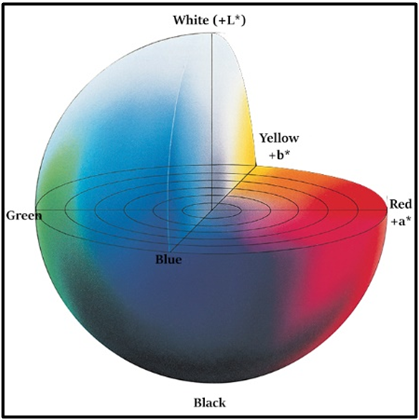
In modern construction and architecture, the significance of ACP sheets cannot be overstated. The flexibility, lightweight, and resistance to damage from corrosion, heat, and weather changes are some of the features that make it the go-to choice for builders, architects, and designers. Among key influencing factors for choosing an ACP sheet in any project, shade consistency plays a vital role, in ensuring a cohesive and visually appealing end result.
The shade consistency refers to the uniformity and consistency of colour and design across the ACP sheets used in a project. Needless to say, the inconsistency of shades can disrupt the harmony of design, which makes it look disjointed and unprofessional. As any construction project requires the right finishing, achieving shade consistency is a significant step towards meeting this expectation. At Viva, this is achieved through our in-house shade development and paint manufacturing unit.
Shades of Brilliance: Viva’s Commitment to Shade Consistency
As shade development and paint manufacturing is being done in-house, we have the paint formulation (Paint recipe) available to us along with the Master/Approved panels of the shade in the lab. Each & every time that particular paint is manufactured for coating at the line, we ensure to follow the same paint formulation/recipe & the shade is matched with the retained Master/Approved panel at the lab in the following ways:
Method 1: Colour Matching Cabinet
Visual Observation of shade is made under different types of lights like D65, TFL, TL-84, UV, CWF etc. These lights have different wavelengths & hence every shade behaves differently under every light. The observation is taken at different angles like face and flip-flop inside the colour-matching cabinet.
Method 2: Spectrophotometer
Observation of any colour, whether the shade is an exact match or not is not possible through visual inspection. At the colour matching cabinet, we can only predict up to what extent the shade is the exact match, or different. Hence, to bring precision to our efforts, Spectrophotometer comes into play. It converts the data into measurable format. This device works on the CIE-Lab colour matching principle & the outputs are obtained in ∆E, ∆L, ∆a & ∆b. The following diagram can understand CIE colour matching:
 From the diagram, it is clear that L, a & b stands for:
L: represents lightness, with 0 being a perfect black, with 0% reflectance or transmission. A rating of 50% indicates a middle grey, while a 100 rating indicates a perfect white. This indicates 100% reflectance and perfect clarity.
a: represents redness-greyness of the colour. Positive values of a* are red, while negative values are green. A level of 0 is neutral.
b: denotes yellow-blueness of the colour. Positive values of b* are yellow, while negative values are blue. 0 indicates neutrality.
These values are also prefixed by a ‘+’ (Positive) OR ‘-’ (Negative) sign, which indicates the direction of shade.
From the diagram, it is clear that L, a & b stands for:
L: represents lightness, with 0 being a perfect black, with 0% reflectance or transmission. A rating of 50% indicates a middle grey, while a 100 rating indicates a perfect white. This indicates 100% reflectance and perfect clarity.
a: represents redness-greyness of the colour. Positive values of a* are red, while negative values are green. A level of 0 is neutral.
b: denotes yellow-blueness of the colour. Positive values of b* are yellow, while negative values are blue. 0 indicates neutrality.
These values are also prefixed by a ‘+’ (Positive) OR ‘-’ (Negative) sign, which indicates the direction of shade.
 The following example can understand this:
The following example can understand this:
Here we can see two apples (Apple 1 & Apple 2). Both apples have unique L, a & b values which are determined by a Spectrophotometer device. Now just by simply subtracting these values, we can find the difference between the colors of these two apples. The difference in colour/shade is represented by adding a ‘∆’ (Delta), hence ∆L, ∆a &∆b. ∆E is called the total colour difference. In this case, it can be observed that:
∆L is in the + (Positive) direction indicating a lighter value (Apple 2 is visually Lighter also) by 4.03 units.
∆a is in the - (Negative) direction indicating a Greener value (Apple 1 is appearing more Red hence Apple 2 will be Green compared to Apple 1) by3.05 units.
∆b is in the + (Positive) direction indicating a Yellow value (Apple 2 is visually Yellow also) by 1.04 units.
∆E is a total colour difference which can be calculated by simple formulae:
You Can Also Read: Unveiling the Creative Journey of Viva ACP's 300+ Shades
Quality Testing of Shades
After the integrated process of methods 1 and 2, the said paint is lined up for coil coating in our CCL, which is again tested throughout to match the consistency of the shade. To make sure the shades are an exact match, we have our previous line-coated master and approved colour samples. If the consistency of the shade matches, it is then given to the colour coating line, where the coils are coated on the very similar and standard parameters on which it was coated before. The parameters for coating of the coil is Oven temperature, Degreasing Bath Concentration, Line Speed, etc.
Viva’s Commitment To Quality
By prioritising consistency in shades, Viva empowers architects, designers, and brands, to build their designs seamlessly. The assurance of consistent shade comes from understanding the approved samples and working on a defined formulation/recipe for each shade. At Viva, we work at Pre-Specified Global Quality Norms and highly- skilled paint technicians, hence able to maintain shade consistency.
In conclusion, achieving shade consistency in ACP sheets is fundamental for delivering projects that stand out for their aesthetic cohesiveness. Our dedication to maintaining shade consistency sets a benchmark in the industry, ensuring that each project utilizing its ACP sheets is a masterpiece of design and visual appeal.





 en
en
 Spanish
Spanish Arabic
Arabic Swahili
Swahili French
French

